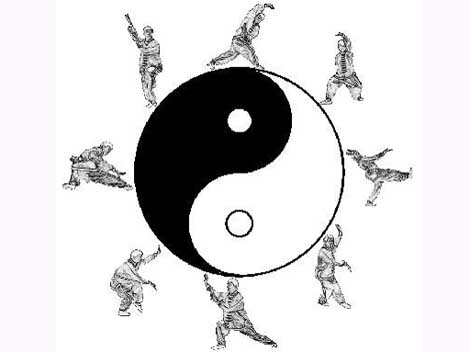The majority of Americans today are aware of the martial arts. Karate, Kung Fu, Tae Kwon Do, Jujitsu, and Tai Chi are known throughout the country. However, there are many more martial arts that remain unexplored. Most of these martial arts are a part of the average American’s everyday life, without the person ever realizing it. Cartoon shows such as “Naruto” and “Avatar: The Last Airbender” depict their characters performing advanced martial arts moves from styles that Americans have never heard of. This goes unnoticed to most, but not Daniel Palermo. With so many styles out there, how can Americans only be aware of three to six? Looking into “Avatar” and “Naruto,” there can be one link found. Both shows depict practitioners of the martial art known as Ba Gua Zhang. What is this style? Where did it come from? What does it mean? Do more people in the United States know about this? The answers to these questions were in desperate need of being uncovered.
As it turns out, Ba Gua Zhang is a fairly new martial art. The style was founded in the late nineteenth century by a man named Don Hai Quan in China. It is said that Ba Gua Zhang, in its raw form, was introduced to Hai Quan by Taoist and Buddhist masters. This appears to make sense, especially considering that the name of the style translates to mean Eight Trigram Palm. In Buddhism, followers of the religion live their lives in accordance with the Eightfold Path, and in Taoism it is said that one must always keep his palms open for Fortune’s gifts. Thus, it can be inferred that Ba Gua Zhang is a style associated with balance, harmony, and the duality of all things. Upon further research, it was discovered that Ba Gua Zhang is also associated with much more than that. Whereas many martial art styles are associated with one animal, and one element, Ba Gua Zhang is associated with eight of each. Each trigram of Ba Gua Zhang is associated with one element and one animal. The elements are as follows: Earth, Thunder, Fire, River/Lake, Heaven, Wind, Water, and Mountain. Their animal associations are Unicorn, Dragon, Hawk, Monkey, Lion, Phoenix, Snake, and Bear respectively.
Ba Gua Zhang is also referred to as the Gentle Fist style. The reason behind its nomenclature is simple. Every strike in this martial art is dealt with an open palm. Through stepping techniques, swaying of the body, and open palm strikes, the usage of Ba Gua Zhang empowers the artist to use one’s own internal energy to inflict damage on the opponent. There are varying techniques that may be implemented in this fighting style, as is the way with many others. Different families have developed different routines and movements for different situations. One style, Eight Trigram Penetrating Palm, involves fiercely powerful palm strikes that serve to rupture the internal organs of the opponent. In other words, this fighting style destroys enemies from the inside, out. This is done primarily by striking at the opponent’s pressure points and “soft spots.”
With regards to why the US has only limited knowledge of this style, one can only assume that it is because the style simply has not been around enough. However, the style has been introduced to the United States in more ways than simply cartoons. While it is very rare to find them, martial arts schools do exist in the United States with masters that teach Ba Gua Zhang. Master Lu Zijian is one such master. In fact, he is one of the oldest and most well known of the Ba Gua Zhang Masters. At 115 years of age, he is still practicing the art. As a prospective student of Ba Gua Zhang, it is good to know where these martial arts schools are located. As it happens, there is a school in Tampa, Florida. The Phoenix Dragon Kung Fu Academy in Tampa claims to be one of the best Ba Gua Zhang schools. This, of course, is most likely a line to get people to come to the school, but it is good to know that there are places of learning so close to home.
In reflection of this research, it can be said that the results are satisfying. It feels as though the art has become less of a mystery and more of a life obsession. This style of fighting shall no longer be shrouded by secrecy, but will instead be open to the minds, souls, and bodies of any who are interested in it. Knowing now that this style is relatively new, one can feel that the practice of such a style can only be considered honorable. Learning about this style has been a greatly fulfilling experience. A sense of self-equalization and balance feels so much closer at hand just by reading the information. If knowledge of the art can do so much, one can only imagine how helpful and eye opening its practice would be.
0fae1ab96114b1c8d564.jpg)